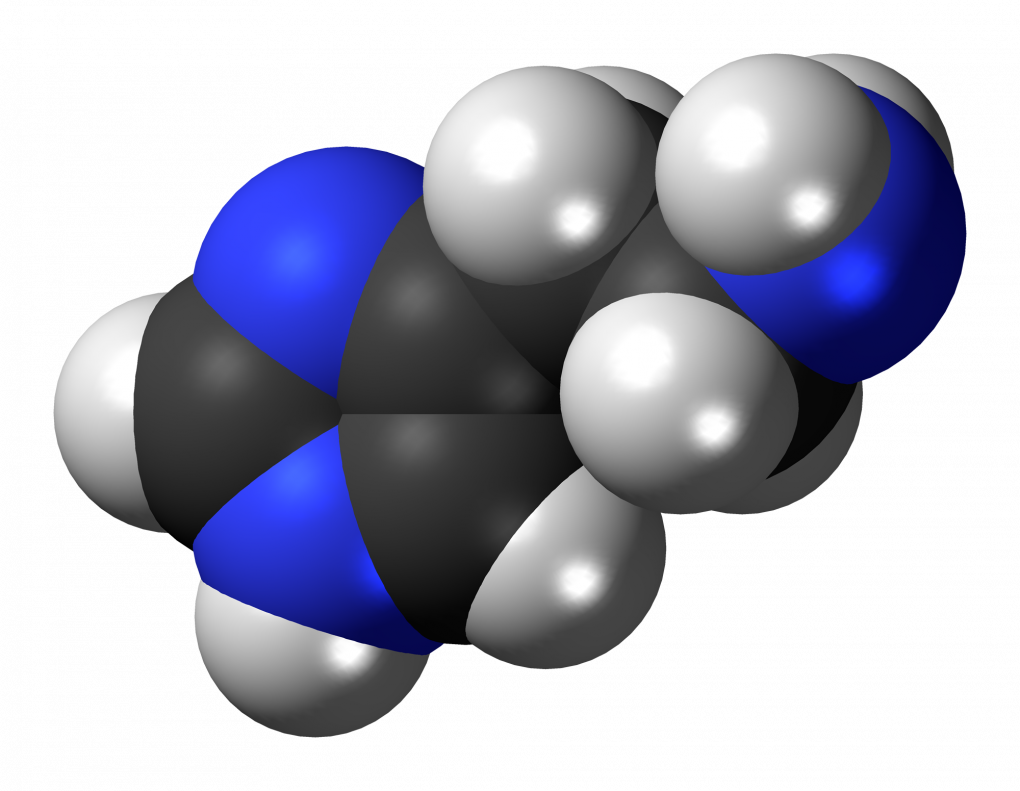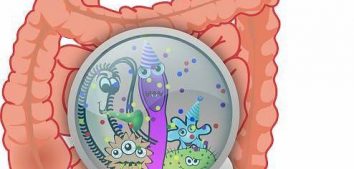
histamine
Histamine is a substance produced during the response of the immune system to increase the blood flow. Various parts of the human body synthesize it, and we require it to function properly.
Histamine is formed by the amino acid histidine. This conversion occurs thanks to the HDC enzyme, among others, which is also produced by bacteria and fungi. The body constantly produces it (and assimilates it from food), but also breaks it down – with the help of the DAO enzyme (diamine oxidase) and / or HNMT (histamine N-methyltransferase). DAO breaks histamine down mainly in the intestines, while HNMT is responsible for its decomposition occurring elsewhere in the body. When they are absent, the level of histamine rises, causing allergic symptoms. It is assumed that the responsibility for enzyme deficiencies is shared between genes, our general state of health, diet, and stress. Furthermore, various medications may reduce the activity of DAO and HNMT.
When the balance between production and decomposition is disturbed, it gives rise to an excess of histamine which leads to an intolerance to it. Intolerance symptoms are unpleasant and similar to these of typical allergic reactions:
- itching skin, eyes, lachrymation
- drop in blood pressure
- indigestion, reflux
- swelling
- hives
- rapid pulse
- fatigue, headaches
- heart palpitations
The alterations of intestinal bacterial flora constitute one of the leading causes of histamine intolerance. Fermentation of food leads to inflammatory conditions which bring about an increase in the level of histamine. Actually, almost all the problems with histamine have their origin in the intestines. This intolerance is common among individuals with:
- Irritable Bowel Syndrome
- gluten intolerance, celiac disease
- bacterial overgrowth in the small intestine
- fungal infections, Candida; parasites
- a habit of taking a lot of drugs that damage the lining of the intestines: birth control pills, antibiotics, steroids, painkillers
- the MTHFR mutation (decreases the activity of DAO)
- food and environmental allergies
Histamine intolerance is difficult to detect. For example, a positive allergy test is the result of the reaction not to an allergen, but to an elevated histamine level triggered by the allergen. Histamine allergy symptoms appear immediately, e.g., red spots in the skin after a glass of red wine or a chocolate bar, while the symptoms of intolerance take a long time to develop and are not properly associated.
People diagnosed with histamine intolerance should be put on a proper diet and avoid:
- tomatoes
- pickled foods and other fermented products
- alcohol
- chocolate
- carbonated beverages
- legumes
- ripened cheeses as well as soft and blue ones
- gluten
- vinegar
- excess of fish and meat
- raw meat
- citrus fruits, strawberries, cherries, grapes, pineapples, bananas, papayas
- cinnamon, cloves, chili, anise, curry, nutmeg
- dishes that contain benzoates, sulfates, nitrites, glutamate, food colorings
- smoked meats, cold cuts, and sausages
- tea
Sources:
Maintz L, Novak N: Histamine and Histamine Intolerance, American Journal of Clinical Nutrition 2007
NMI Portal für Nahrungsmittel Intoleranz, Histaminunverträglichkeit – Richtige Ernährung
A blog called “Tłuste Życie”










Comments No Comments
Join the discussion…